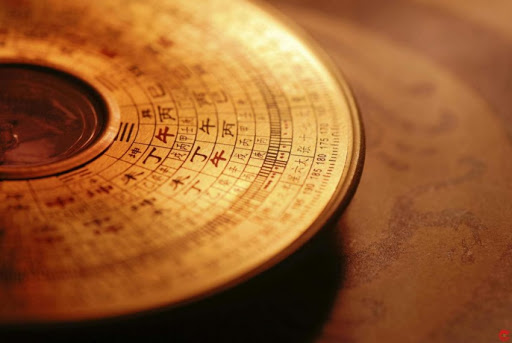The I Ching, also known as the Book of Changes, is a foundational work in ancient Chinese philosophy. Contrary to the common misconception of it being a superstitious fortune-telling manual, it is in fact a profound system of wisdom based on observations of nature and human life. By embodying the interplay of Yin and Yang, it reveals the objective patterns of change in the universe and uses symbolic hexagrams to mirror the operations of heaven and earth, offering guidance for adapting to changing circumstances.
Ancient sages noticed that constant change coexists with eternal patterns such as sunrise and sunset or the cycles of the seasons. This led to the concept of “Three Meanings of Change (Yi)”: “Bu Yi” (unchanging principles), “Bian Yi” (constant transformation), and “Jian Yi” (simplicity of truth), emphasizing that the world operates by rules that can be understood and applied.
The I Ching is built upon the eight trigrams (Ba Gua): Qian (Heaven), Kun (Earth), Zhen (Thunder), Xun (Wind), Kan (Water), Li (Fire), Gen (Mountain), and Dui (Lake). Each trigram consists of three lines (Yin or Yang). Stacking two trigrams creates a six-line hexagram, and a total of 64 hexagrams describe all possible situations in the universe.
The 64 hexagrams of the I Ching are not magical predictions but symbols formed from centuries of observation and philosophical insight. They present patterns of change in a visual form to help us reflect upon our circumstances and responses. In this way, the I Ching is a tool for symbolic thinking and rational analysis—not fatalistic superstition.
Image: A diagram of the 64 hexagrams, formed by combining two trigrams (upper and lower), showing the logical structure of Yin and Yang interactions. Each hexagram represents a unique condition in nature and human affairs.
The core spirit of the I Ching is change. It reminds us that all things in life are dynamic and evolving. “When obstruction reaches its peak, smoothness follows; when extremity is reached, reversal begins.” From the I Ching perspective, we focus on the momentum and timing of transformation, not on fixed outcomes. By studying the symbols and commentary of each hexagram, we gain insights into how to act wisely—when to advance, when to wait, and how to prepare.
In short, the philosophical foundation of the I Ching lies in deep observation of universal laws. It is not based on mystical fantasy, but on the distilled wisdom of ancient sages conveyed through symbols and metaphors. To study the I Ching is to train oneself in dialectical thinking—to stay flexible while discerning unchanging truths amid constant change. It is a way to navigate the ups and downs of life with greater clarity and composure.
Common Methods of I Ching Divination
Over time, several methods of I Ching divination have developed—some rooted in classical tradition, others adapted for modern simplicity. Below are four major approaches, each with its own principles and steps:
- Plum Blossom Numerology (Meihua Yishu)Created by Northern Song dynasty scholar Shao Yong, this method uses natural numbers and intuitive imagery to form a hexagram. One can use the current time, date, or visible phenomena (such as the number of birds, people, or vehicles) to generate the upper and lower trigrams, then identify a changing line to form both a primary and a transformed hexagram.
This method emphasizes numerology and intuition over ritual, making it accessible for beginners and suitable for quick consultations. The interpretation combines the Five Elements (Wu Xing), symbolic associations, and classical hexagram texts.
- Six Yao (Six Lines) DivinationThis traditional method involves casting three coins six times to generate six lines, forming a hexagram from bottom to top. Each throw of coins yields either a Yang (solid line), Yin (broken line), moving Yang (changing into Yin), or moving Yin (changing into Yang). If any line is moving, it changes to its opposite and produces a transformed hexagram.
Interpretation involves reading the judgment text for the hexagram and analyzing each line’s symbolic message (known as Yao Ci). The system also incorporates “Six Relationships” (e.g., parent, child, spouse) and elemental interactions for deeper analysis.
- Wen Wang Divination (King Wen’s Method)A more advanced version of Six Yao divination, this approach adds elements from Chinese metaphysics, such as Heavenly Stems, Earthly Branches, and the Five Elements. It assigns symbolic roles (“useful gods”) to certain lines and relates them to time periods, relationships, and events. Practitioners often use a lunar calendar to time predictions.
Because of its complexity and detail, Wen Wang divination has long been regarded as a high-level and professional method. It is excellent for analyzing nuanced questions such as legal issues, contracts, or long-term strategy.
- Modern Coin MethodThis is the most popular and simplified version of Six Yao divination used today. Using three coins, one tosses them six times and records the number of heads and tails each time. The outcome corresponds to Yin, Yang, or changing lines, from bottom to top. The resulting hexagram (and possibly a changing one) can then be interpreted using the I Ching text.
Because it requires no special tools or calculations, this method is beginner-friendly and ideal for daily use. It preserves the symbolic logic of the traditional Yarrow Stalk method but is much easier to perform.
Summary:Each method has its strengths:
Plum Blossom focuses on intuitive, symbolic analysis.
Six Yao and Wen Wang methods provide thorough and layered interpretation.
The coin method is simple and accessible.
Regardless of method, one must maintain sincerity and focus. Divination is not about seeking absolute answers, but about activating symbolic reflection to better understand the present moment and make thoughtful decisions.


Leave a Reply